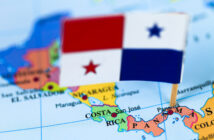Canada is launching its boldest immigration plan ever amidst a second wave of COVID-19, in hopes of creating a roadmap to economic recovery. Much like some political officials in the United States, they believe that bringing in more people to compete in the workforce will somehow boost their economy while millions of their fellow citizens remain unemployed due to the COVID shutdowns. Why is it that countries turn to outside forces to save them from economic crisis when doing so disenfranchises the struggling people who are still out of work in their own country?
Canada plans to welcome more than 1.2 million new immigrants – an increase of more than 50,000 immigrants per year compared to pre-COVID levels – over the next three years to assist in rebuilding their struggling economy. The annual intake would reach 401,000 in 2021; 411,000 in 2022; and 421,000 in 2023. Meanwhile, the Canadian unemployment rate hit a high of 13.4 percent in May, declining slightly to nine percent as of September. And while the new immigration targets are ambitious for the country, they are not uncharacteristic. Just like the U.S. government, the Canadian government has kept immigration intake high during recessions for the past thirty years, a plan that makes little sense in the real world.
Not only does increasing immigration during a time of economic struggle create unnecessary competition in the domestic workforce, it also makes it more difficult for the immigrants entering during these times to find employment. Often large corporations turn to foreign-born workers because they can pay a lower wage than if they hired native-born workers. A 2012 study showed that Canada’s high intake of immigrants during periods of economic difficulty contributed to the poor economic performance of immigrants. Over a thirty-year period, immigrants made 30 to 40 percent less money than Canadian-born workers.
As Canada faces a second wave of COVID-19, the country should look inward for solutions by providing opportunities for those already in the country to get back to work. Turning to outside labor sources as a means to ‘save’ the economy creates unnecessary competition in the workforce during times of high unemployment and sets up newly-arrived immigrants for failure.




